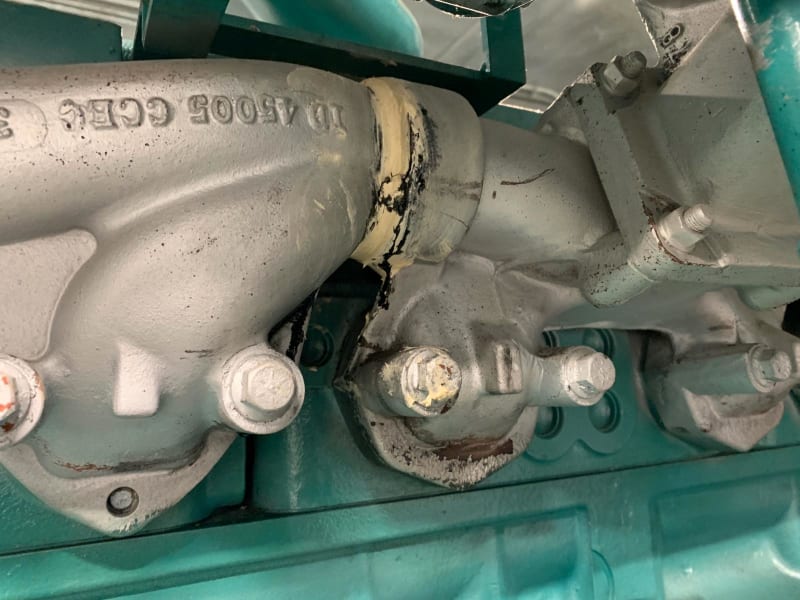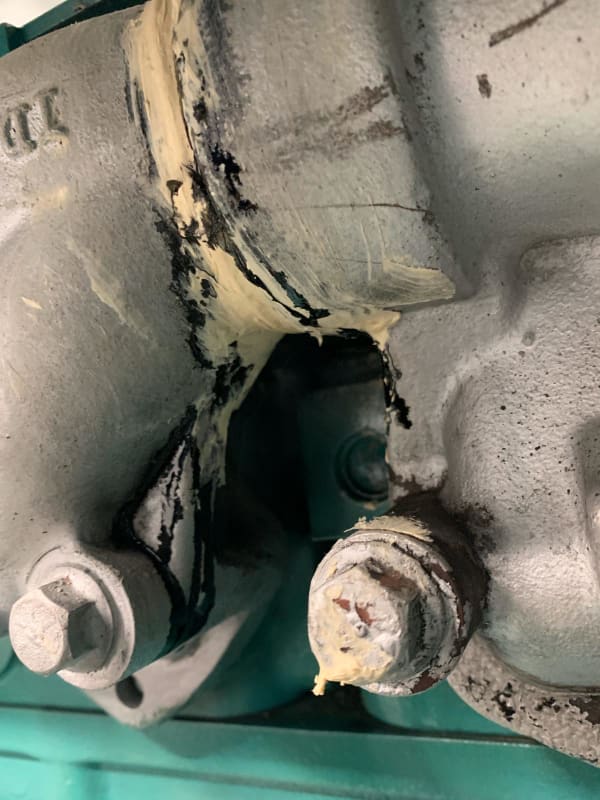Is this a new set?
A common diesel design admits the combustion pressure behind the rings to aid in sealing.
Your rings are not perfectly seated and are allowing oil to pass when the engine is lightly loaded and the combustion pressure is low.
This is a known problem in smaller residential standby sets, particularly in homes with a lot of air conditioning.
I have successfully cured the condition by running the set loaded on a load bank for several days.
This causes the rings to be better seated and the condition goes away.
It is easy to say;
"Don't run the set with a light load."
A standby set has a tough life and the realities of normal load versus sizing for peak load generally dictate the set size and the set loading for a significant part of the running time.
The standby set is sitting cold (or cool).
The start signal is given and the set immediately goes to full speed.
The set is block loaded and may be hit with transient overloads.
The set may then continue in service at 10% or 20% of rated load.
All within possibly 8 or 10 seconds.
Then, possibly, that one large motor that dictated the set sizing is started and the set, that has not reached normal operating temperature, is hit with a starting surge of 200% to 300% of the set rating.
Then the set runs the rest of the day at about 15% to 25% of the rated capacity.
This is an example of an actual installation.
The vendors engineers demanded that we perform a 120 hour load bank run to seat the rings as a condition of warranty.
I won't say;
"Don't run the set at light loads."
That may not be possible.
I will say;
"Don't run the set at NO LOAD except for a few minutes for testing."
Try a day on a load bank and see if that helps.
If not, then try two or three days on the load bank.
An old school trick was to introduce an ounce or two of ring sealing powder into the intake with the engine running at speed.
I understand that in years past, John Deere supplied small packets of the ring sealing powder, but that may have been one or two dealers rather than the parent company.
When the old school mechanics discovered that the magic powder was powdered pumice, they started using Bon-Ami.
About a table spoon is about right to seat the rings.
Personally I prefer the load bank.
Good luck
Bill
--------------------
"Why not the best?"
Jimmy Carter


